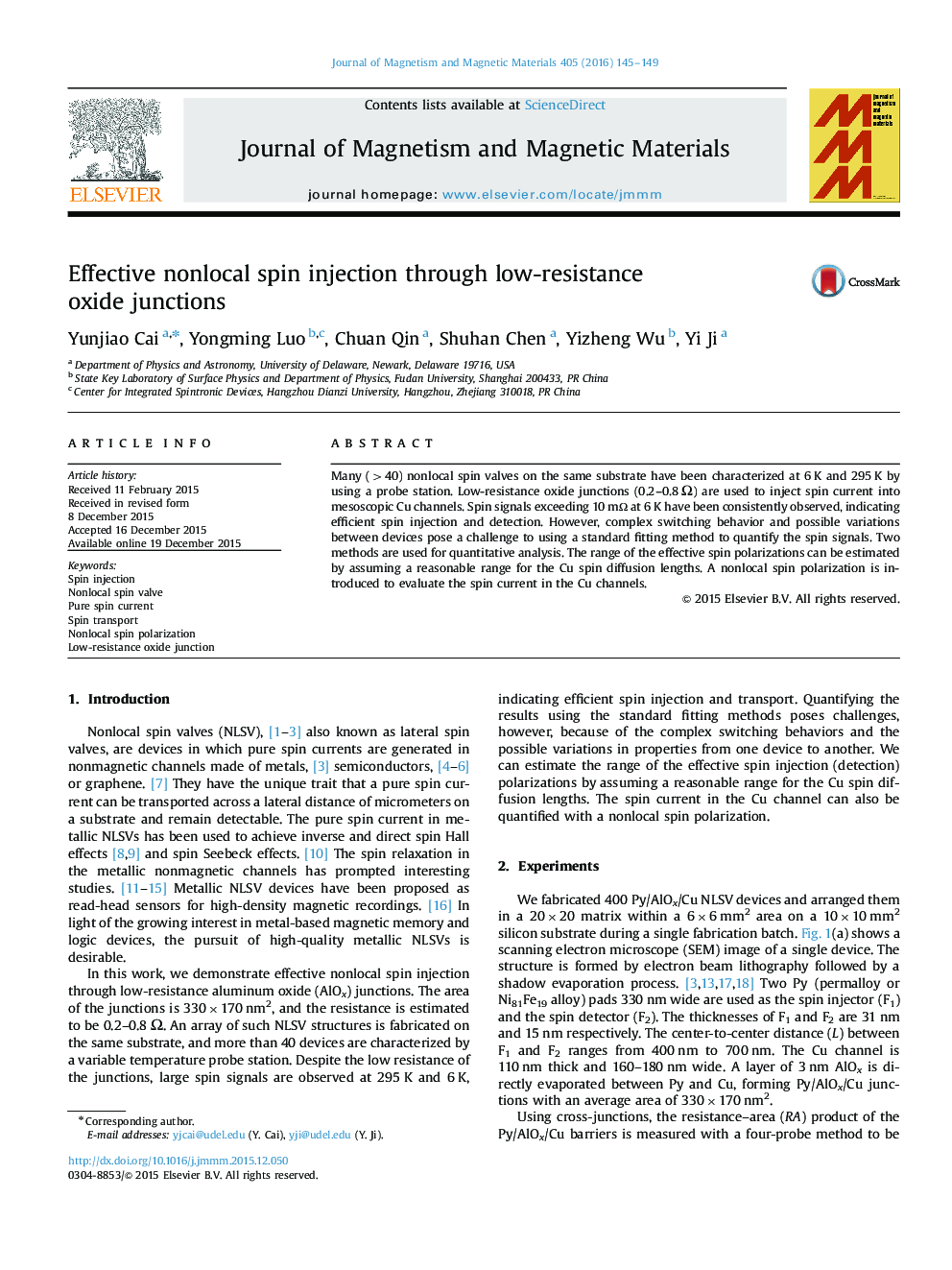| Article ID | Journal | Published Year | Pages | File Type |
|---|---|---|---|---|
| 1798266 | Journal of Magnetism and Magnetic Materials | 2016 | 5 Pages |
•A large number of nonlocal spin valves on the same substrate are fabricated and characterized.•Oxide barriers with low resistance (<1 Ω) are utilized as spin injection (detection) interfaces.•Substantial nonlocal spin signals are observed indicating efficient spin injection and detection.•New methods are proposed to quantify the nonlocal spin signals.
Many (>40) nonlocal spin valves on the same substrate have been characterized at 6 K and 295 K by using a probe station. Low-resistance oxide junctions (0.2–0.8 Ω) are used to inject spin current into mesoscopic Cu channels. Spin signals exceeding 10 mΩ at 6 K have been consistently observed, indicating efficient spin injection and detection. However, complex switching behavior and possible variations between devices pose a challenge to using a standard fitting method to quantify the spin signals. Two methods are used for quantitative analysis. The range of the effective spin polarizations can be estimated by assuming a reasonable range for the Cu spin diffusion lengths. A nonlocal spin polarization is introduced to evaluate the spin current in the Cu channels.
